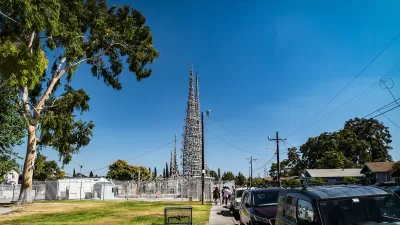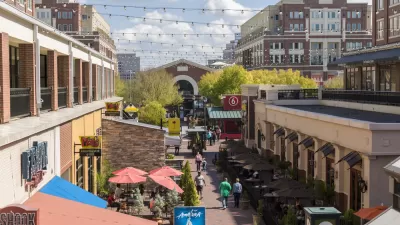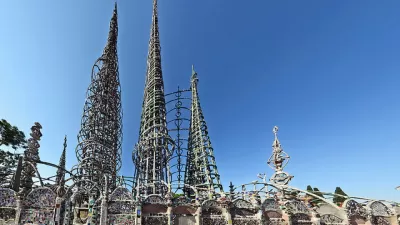Artist Edgar Arceneaux is the man behind the Watts Towers Project, a collaboration of international artists to make the poverty-stricken neighborhood facing on the famed folk art structure into works of art in their own right.
“What is Watts? What does Watts need? And what does Watts deserve? These have been among the hard questions Arceneaux, with the help of residents, hopes to answer. To the outside world, Watts is many things: code, a euphemism, a one-word cautionary tale. "It's a place that everybody thinks they know about but are afraid to go to," says Arceneaux. "And this project offers a chance for people to come together and build something collectively."
After dozens of community meetings, fundraisers, late-night porch talks and a trip to buy a foreclosed property at auction, this first chapter of Arceneaux's venture -- a grand-scale collaboration involving local artists and the city's major arts and educational institutions, as well as residents -- is finally beyond the drawing board phase. Based on artist Rick Lowe's Houston development, Project Row Houses, the Watts House Project (WHP) -- part conceptual art, part activism -- is a mission that Arceneaux, its director, describes as "an artwork in the shape of a neighborhood development."
At the moment, his medium looks like many old streets in L.A., those elder neighborhoods that have eluded the nip-and-tuck of assembly-line gentrification. Here stands a row of bungalows, some stucco, others with their original wood, some fronted by neat lawns, or gardens tangled with succulents or bright splashes of bottle brush."
FULL STORY: Watts House Project: art meets architecture near the Towers

Alabama: Trump Terminates Settlements for Black Communities Harmed By Raw Sewage
Trump deemed the landmark civil rights agreement “illegal DEI and environmental justice policy.”

Planetizen Federal Action Tracker
A weekly monitor of how Trump’s orders and actions are impacting planners and planning in America.

The 120 Year Old Tiny Home Villages That Sheltered San Francisco’s Earthquake Refugees
More than a century ago, San Francisco mobilized to house thousands of residents displaced by the 1906 earthquake. Could their strategy offer a model for the present?

In Both Crashes and Crime, Public Transportation is Far Safer than Driving
Contrary to popular assumptions, public transportation has far lower crash and crime rates than automobile travel. For safer communities, improve and encourage transit travel.

Report: Zoning Reforms Should Complement Nashville’s Ambitious Transit Plan
Without reform, restrictive zoning codes will limit the impact of the city’s planned transit expansion and could exclude some of the residents who depend on transit the most.

Judge Orders Release of Frozen IRA, IIJA Funding
The decision is a victory for environmental groups who charged that freezing funds for critical infrastructure and disaster response programs caused “real and irreparable harm” to communities.
Urban Design for Planners 1: Software Tools
This six-course series explores essential urban design concepts using open source software and equips planners with the tools they need to participate fully in the urban design process.
Planning for Universal Design
Learn the tools for implementing Universal Design in planning regulations.
Clanton & Associates, Inc.
Jessamine County Fiscal Court
Institute for Housing and Urban Development Studies (IHS)
City of Grandview
Harvard GSD Executive Education
Toledo-Lucas County Plan Commissions
Salt Lake City
NYU Wagner Graduate School of Public Service





























